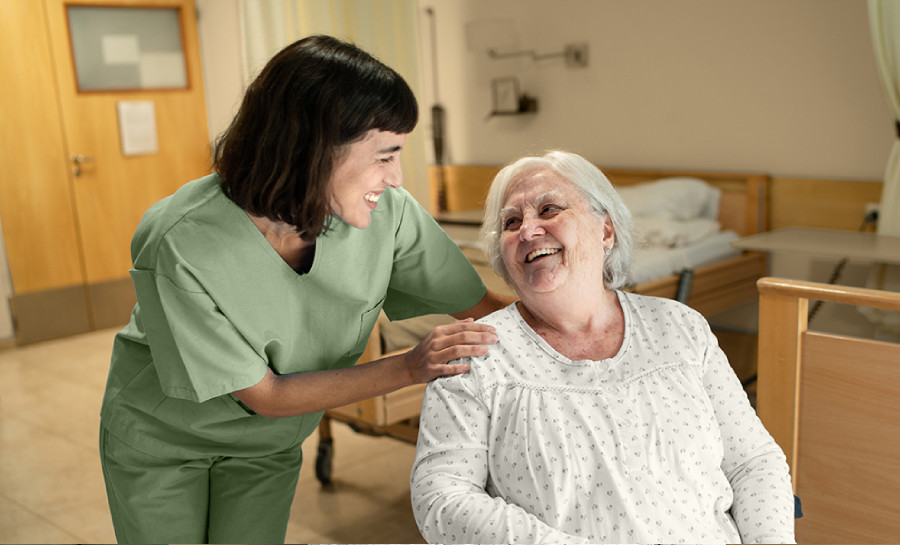In the realm of healthcare innovation, CNA (certified nursing assistant) charting systems merge efficiency and empathy. These digital tools have revolutionized resident care in skilled nursing facilities (SNFs) by ensuring meticulous and accessible record-keeping.
This guide highlights how CNA charting systems enhance resident safety, streamline workflows, and improve communication among healthcare professionals. Whether you’re an experienced CNA or a facility manager, understanding these systems is essential for providing exceptional care in today’s dynamic healthcare environment.
What Exactly Is a CNA Charting System?
A CNA charting system is more than just a digital logbook; it’s the foundation of excellent resident care. These systems are crafted to simplify the documentation process, helping CNAs record everything from vital signs to activities of daily living (ADLs) and changes in condition.
By consolidating this information, healthcare providers can access the most current and comprehensive resident data, which is essential for making well-informed decisions and delivering top-notch care.
The Role of CNA Charting in Healthcare
CNAs spend most of their time with residents and observing their day-to-day health. Accurate and timely documentation is essential for maintaining a clear and detailed record of resident status. This information is not only vital for the CNAs themselves but also for nurses, doctors, and other healthcare professionals who rely on these records to make accurate assessments and adjust treatment plans as needed.
A well-implemented CNA charting system ensures that all team members are on the same page, reducing the risk of miscommunication and medical errors.
How CNA Charting Systems Improve Resident Care
CNA charting systems provide essential support, ensuring staff is more available to provide hands-on resident care. These systems include advanced features such as real-time alerts for sudden changes in a resident’s condition, task reminders, and quick access to past records. This reduces the time CNAs spend on paperwork allowing them to focus on residents to ensure they receive timely and efficient care for improved outcomes and higher resident satisfaction.
Key Features of CNA Charting Systems
CNA charting systems offer a variety of features that boost efficiency, accuracy, and collaboration among caregivers. Here are some of the essential features that make these systems indispensable:
Digital Documentation
Digital documentation reduces the risk of errors and makes it easier to access the information CNAs need, when they need it. Real-time updates keep staff informed about resident conditions and treatment plans, which is crucial in healthcare, where timely and accurate information can make a significant difference.
EHR Integration for Seamless Workflow
CNA charting systems connect with electronic health records (EHRs) to keep all resident data synchronized, from mobile devices to the facility’s main database. This eliminates double data entry, reduces paperwork, and allows you to focus more on your residents.
EHR integration also facilitates closer collaboration with other healthcare professionals, like doctors and nurses, ensuring your residents receive the best possible care.
Compliance and HIPAA Security Measures
Most CNA charting systems implement robust security measures, including encryption and limited access, to protect resident information.
They offer features that simplify compliance and ensure transparency, including automatic audit trails and customizable reports. For skilled nursing facilities, these elements are vital for maintaining trust and ensuring resident information remains private and secure.
Mobile and Cloud-Based Access for CNAs
Mobile and cloud-based access for CNAs brings a new level of convenience, offering flexibility and ease in their daily routines. With mobile access, CNAs can update resident information and check critical data on the go, eliminating the need to be tied to a desktop.
Cloud-based systems ensure that all information is current and accessible, even as CNAs move from one task to the next. This not only enhances productivity but also promotes better communication within the care team, leading to more cohesive and effective resident care.
Benefits of Using CNA Charting Systems
A CNA charting system offers advantages that go beyond record-keeping; it ensures resident safety and team satisfaction.
Reducing Documentation Errors
One of the most significant benefits is the reduction of documentation errors. Handwritten charting can lead to mistakes that might result in serious issues, such as incorrect medication dosages or overlooked resident needs.
Enhancing Communication Among Care Teams
Improved communication is another powerful advantage of CNA charting systems. In the fast-paced environment of a skilled nursing facility, keeping everyone informed is crucial.
These systems streamline the process, allowing staff to update resident records quickly and access them from any connected device. Real-time information sharing ensures that everyone is on the same page, reducing mix-ups and enhancing the quality of resident care.
Streamlining Workflows for CNAs and Nurses
CNA charting systems are designed to integrate seamlessly with existing processes, handling the small tasks that can consume valuable time.
By reducing administrative burdens, CNAs can focus more on providing the high-quality care their residents need. For nurses, reviewing the CNAs’ logs is quick and easy, ensuring that care plans are accurate and up to date.
Improving Resident Safety and Care Coordination
These systems offer a comprehensive view of each resident’s status, including their medical history, current treatments, and any recent changes.
This enables healthcare providers to make informed decisions and adjust care plans in real time. The ability to track and document every aspect of resident care ensures that no detail is overlooked, contributing to a safer and more coordinated care environment.
How to Choose the Best CNA Charting System for Your Facility
By thoughtfully weighing these factors and comparing the leading solutions, you can choose a CNA charting system that elevates the quality of care and operational efficiency in your facility:
- Easy to adopt: Your team should be able to navigate and input resident information quickly and accurately, with minimal training. Look for systems that offer customizable templates and a simple, clean interface.
- Integrates with your existing EHR: This ensures data consistency, reducing the risk of errors and enhancing facility efficiency.
- Compliant: Look for features such as role-based access control, audit trails, and encryption to protect sensitive data.
- Scalability: While the initial price tag is important, it’s crucial to think long-term. A system that can grow with your clinic is a valuable investment.
- Customer support: Pay close attention to the quality of customer support and the training resources they provide. A provider that offers comprehensive training and excellent support can significantly enhance the success of your implementation.
- Staff feedback: CNAs are the ones who will be using these systems day in and day out, and their insights can be invaluable. Consider setting up surveys or focus groups to hear their preferences and concerns.
PointClickCare and CNA Charting Systems
PointClickCare’s CNA Charting System is designed for today’s healthcare environment. Its user-friendly design simplifies the charting process to reduce the time spent on documentation, allowing CNAs to focus more on resident care.
Our tools facilitate seamless collaboration among CNAs, nurses, and other staff, ensuring that everyone is well-informed. Features such as secure messaging, task alerts, and care plan updates help maintain a high standard of care.
Beyond these practical advantages, PointClickCare’s CNA charting systems are adaptable and flexible to allow your facility to personalize the platform to meet your unique requirements.
Learn more about how PointClickCare’s skilled nursing software can transform your facility’s resident care.
Frequently Asked Questions About CNA Charting Systems
Interested in learning more about CNA charting systems? Below are some common questions and answers that can provide valuable insights.
Both are essential to resident care, but they each have their own focus. CNA charting systems are tailor-made to simplify the documentation tasks of Certified Nursing Assistants (CNAs). They’re all about capturing the details of daily care, from vital signs to personal hygiene, and the meaningful interactions CNAs have with their residents.
Electronic Health Records (EHRs) provide a comprehensive overview of a resident’s medical history, covering everything from diagnoses to treatments and medications. These records are used by a diverse team of healthcare professionals, including doctors and nurses, to maintain a complete and accurate picture of a resident’s medical history.
While not legally mandatory, CNA charting systems significantly enhance compliance with the strict rules and regulations set by the Centers for Medicare and Medicaid Services (CMS) and your state health department. This is crucial for audits and inspections.
These systems also ensure that no important information is overlooked and that all necessary documentation is completed on time.
By providing CNAs with a clear and structured method for documenting the care they provide, these systems ensure that all members of the care team have the necessary information at their fingertips.
This reduces the risk of mistakes and oversights, leading to better decision-making and more consistent care. Many CNA charting systems also include tools for tracking resident progress and identifying trends, which are invaluable for creating care plans and addressing potential issues early.
Additionally, these systems streamline the documentation process, freeing up more time for CNAs to spend with residents, benefiting everyone involved.






